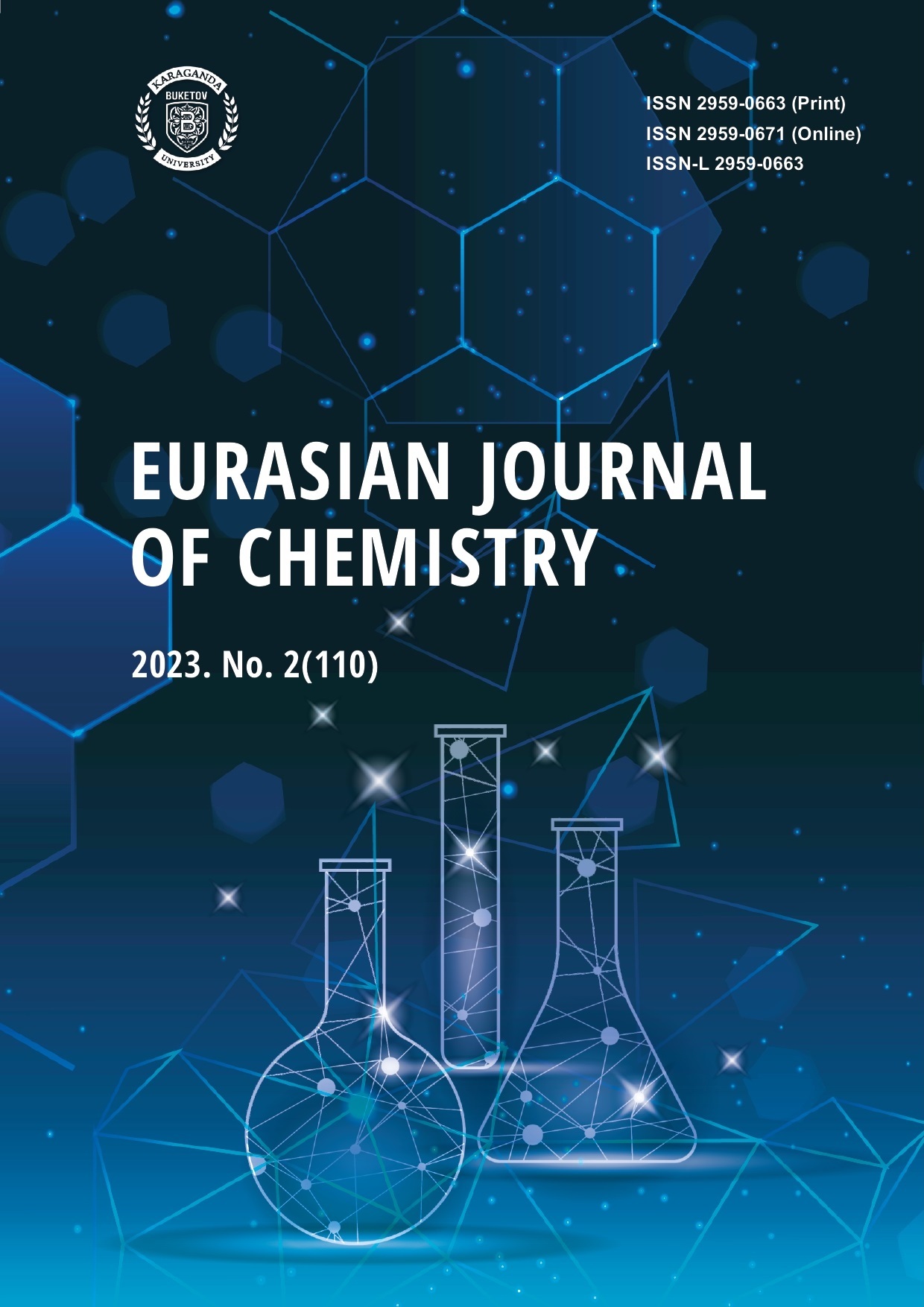Synthesis and Spatial Structure of (E)-1-(2-(4-Bromobutoxy)- 6-Hydroxy-4-Methoxyphenyl-3-Phenylprop-2-en-1-one
DOI:
https://doi.org/10.31489/2959-0663/2-23-2Keywords:
NMR spectroscopy, IR spectroscopy, X-ray analysis, (E)-1-(2-(4-bromobutoxy)-6-hydroxy-4-methoxyphenyl-3-phenylprop-2-en-1-one, chalcone, flavone, phenolic compoundsAbstract
(E)-1-(2-(4-bromobutoxy)-6-hydroxy-4-methoxyphenyl-3-phenylprop-2-en-1-one was synthesized from the pinostrobin molecule. The tetrahydropyran cycle was opened in acetone under heating (50–60 °C) mixtures of components for 16 hours in the presence of 3 moles of K2CO3 and 1,4-dibromobutane. The resulting substance is a yellow powder of the composition C20H21BrO4, mp 83.7–86.6 °C. The structure of the obtained compound was established on the basis of the data of elemental analysis, IR and NMR spectra. As a result of X-ray diffraction analysis, it was found that the hydrogen atoms in the C8=C9 bond take the trans-conformation. The rotation of the С1…С6 phenyl ring (flat with an accuracy of ±0.008 Å) relative to the С10…С15 cycle (flat with an accuracy of ±0.004 Å) is 14.3°. In the crystal, the molecules are linked by an intramolecular hydrogen bond O4-H....O1 (distances O-H 0.95(8) Ǻ, O····O 2.469(6) Ǻ, H····O 1.58 (8) Ǻ, angle O-H····O 153(7)°). The formation of (E)-1-(2-(4-bromobutoxy)-6-hydroxy-4-methoxy-1-phenylprop-2-en-1-one can be explained by the ease of the retro-Michael reaction of the pyran ring and the subsequent O‑alkylation of the resulting chalcone. Carrying out the reaction in the presence of other bases (cesium carbonate, triethylamine) did not lead to success. The starting substance (pinostrobin) was completely converted into oligomeric compounds.
Downloads
Published
How to Cite
Issue
Section
License
This work is licensed under a Creative Commons Attribution-NonCommercial-NoDerivatives 4.0 International License.
Authors retain copyright and grant the journal right of first publication with the work simultaneously licensed under a Creative Commons Attribution License (CC BY-NC-ND 4.0) that allows others to share the work with an acknowledgement of the work's authorship and initial publication in this journal.




